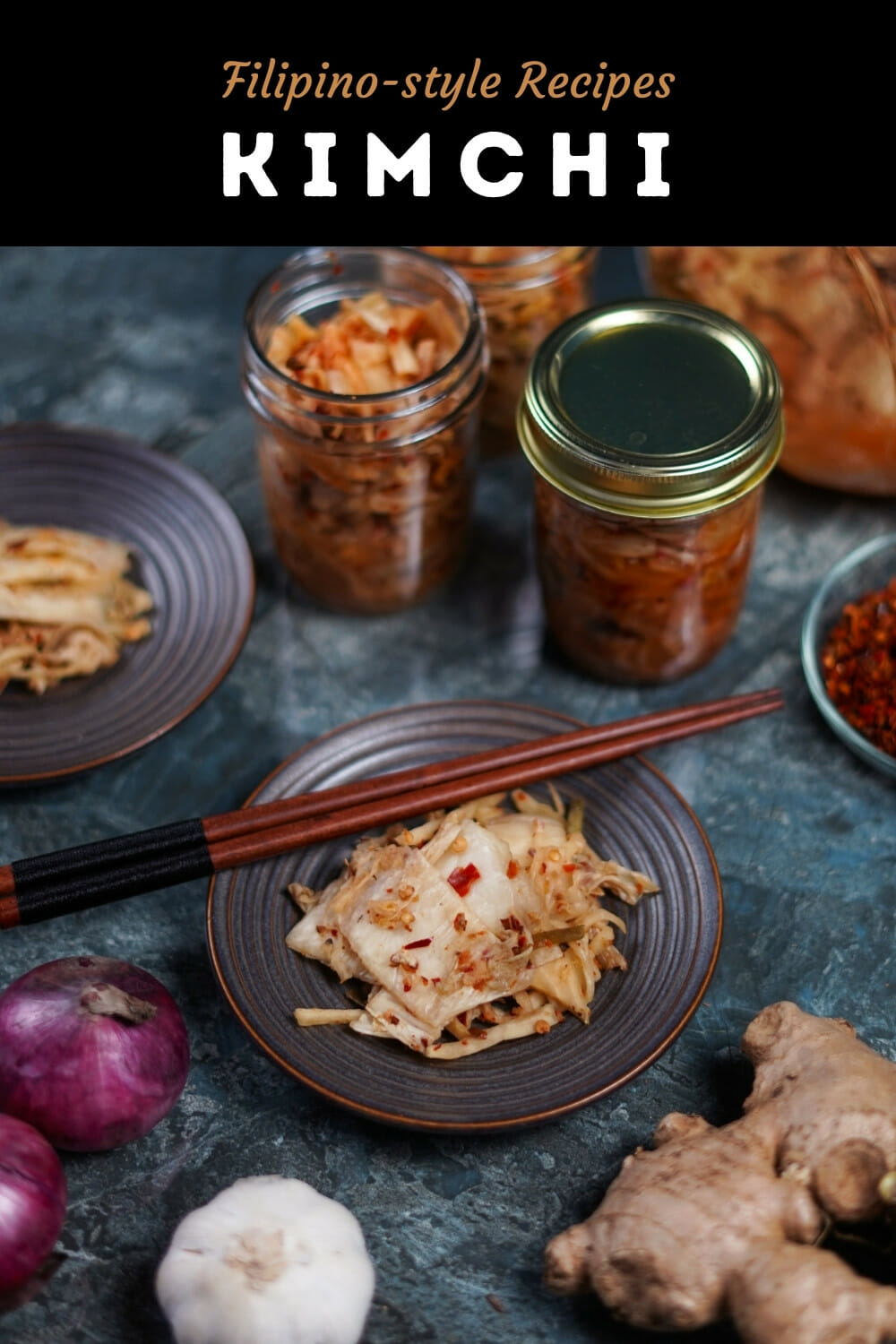A traditional fermented cabbage side dish with Filipino flavors. Give your digestive system a healthy reboot with our kimchi recipe!
Korea's traditional kimchi is a salted, fermented vegetable dish. Typically made from Napa cabbage, radish, garlic, ginger, and red pepper flakes, kimchi is a staple of Korean cuisine. It is packed with flavor and nutrients and has a tangy, spicy, sour taste. Its health benefits are similar to those of sauerkraut, including improved immunity and gut health. Kimchi is also rich in probiotics. In Korean, soups, snacks, and other dishes, this side dish is commonly used as a flavor enhancer and a complement to the main dish.
What's more, it can be eaten raw if you prefer! I love eating kimchi straight from the jar without any cooking at all. This kimchi recipe has no preservatives added, so you know exactly what you are eating. You won't find anything artificial here, so I feel great knowing my family will eat healthy superfoods every day.
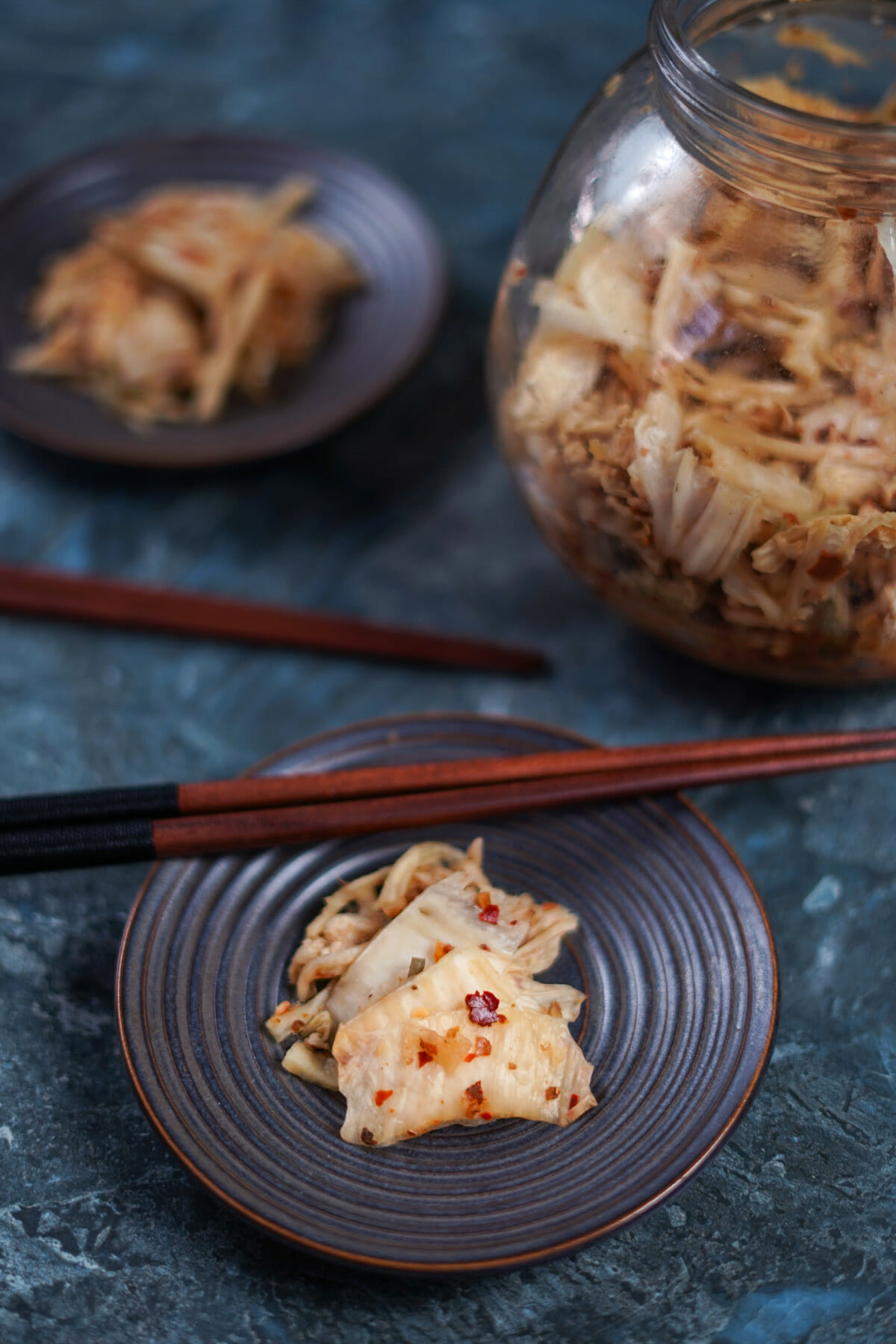
This popular side dish has a long history starting from the Silla dynasty, around 57 BC to 935 AD. Which was when Buddhism helped foster a vegetarian lifestyle. This originated with the idea of enjoying vegetables even in the winter season. To preserve as many vegetables for the incoming cold weather, vegetables fermented with salt and seasonings were placed in ceramic pots or ‘onggi’, buried in the ground till it was ready to be eaten.
Early kimchi recipes did not include garlic or chili peppers. Portuguese traders introduced chili peppers (native to America) to East Asia in the 17th century. It was not until the 19th century that chili peppers became widely used in kimchi even though it was being farmed long before that. Kimchi of today is the result of hundreds of attempts to try different spices, a variety of vegetable combinations, and a variety of methods for preserving it.
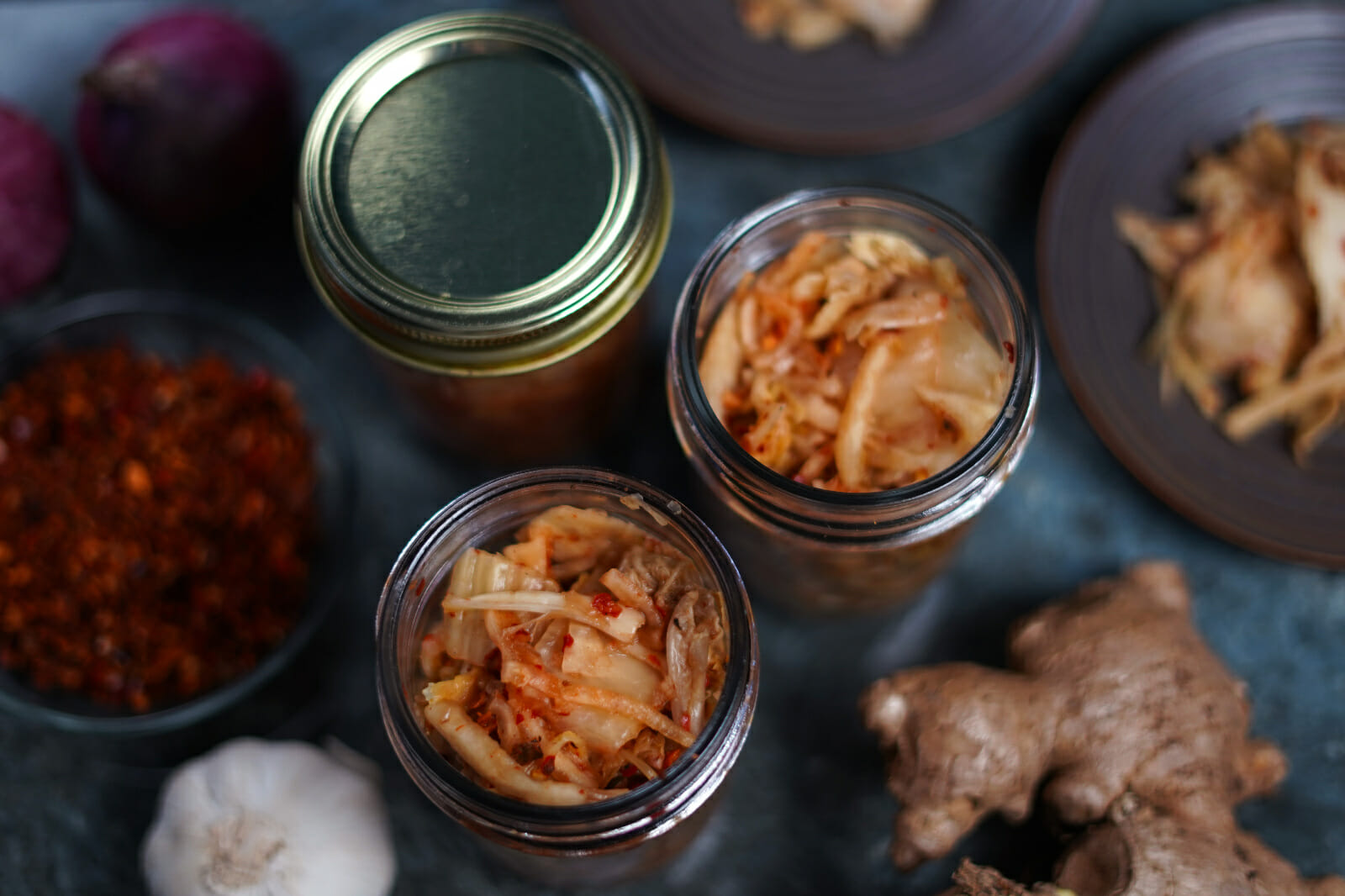
The ingredients list
- Nappa cabbage – known as Pechay Baguio in the Philippines. This is the main ingredient, a type of cabbage with a lettuce-like shape.
- Sea salt – helps create the crunch and adds flavor to the cabbage.
- Water – in addition to the salt, it’s used to brine the cabbage overnight.
- Radish – a filler and helps give an extra crunch in the kimchi
- Scallion – adds a mild onion taste.
- Garlic – a healthy and flavorful ingredient with its own spicy take.
- Ginger – has a slightly peppery, warm, and spicy aroma.
- Brown sugar – add sweetness, this can also be replaced with honey and other sweeteners.
- Fish sauce – a condiment used in Asian dishes to add saltiness and umami.
- Shrimp paste – another condiment used in Asian cuisine that adds a salty and slightly fishy flavor.
- Korean red pepper flakes – a strong aromatic seasoning that not only adds spice but color to the dish
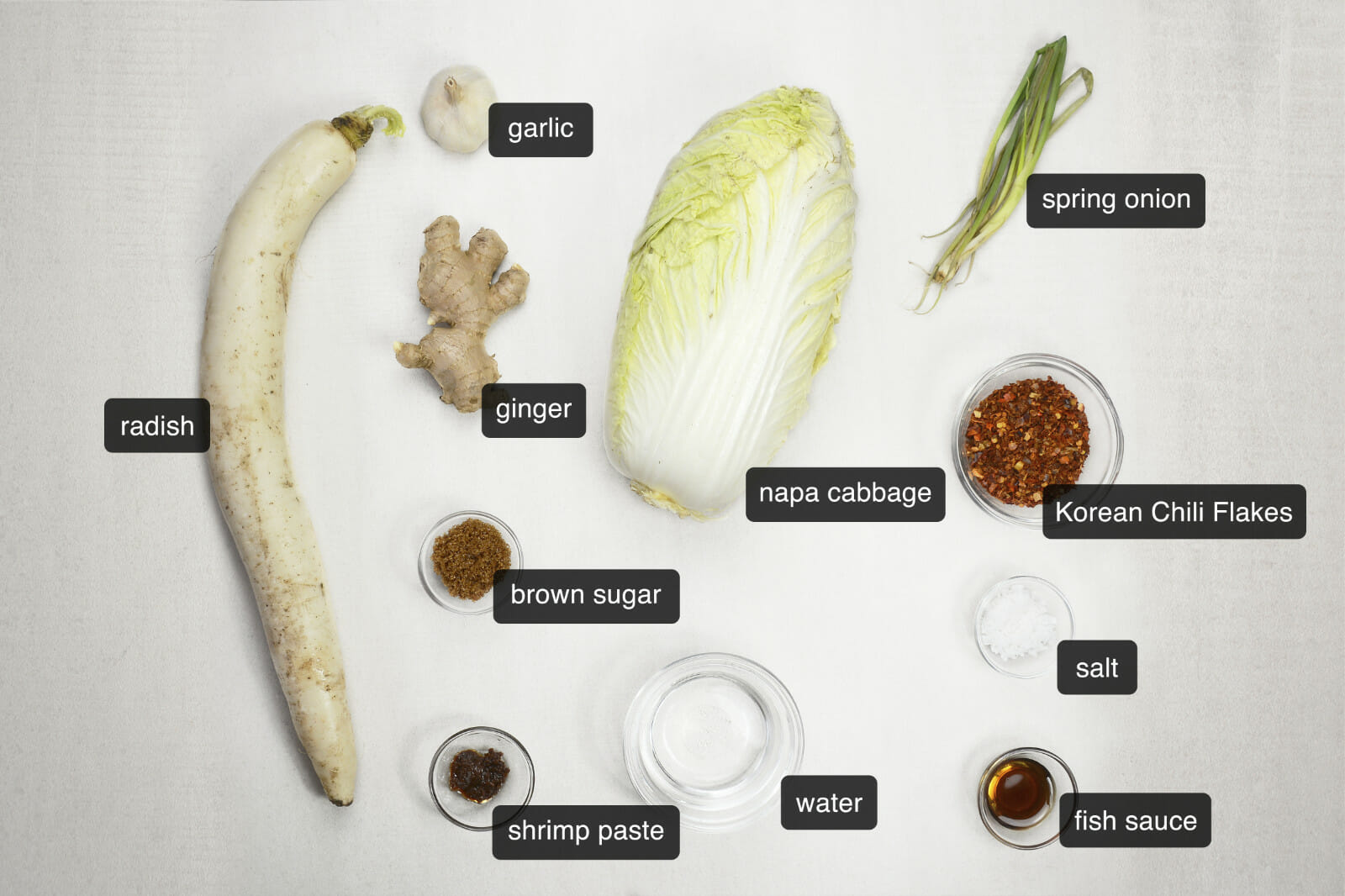
Quick tips
- Make sure that the glass jar used for storing the kimchi is clean and dry.
- Temperature matters in the fermentation process of making kimchi, when fermenting this in ‘room temperature’ for 1 to 3 days, make sure that it is stored in a dark and dry area like a shelf, as long as it wont hit direct sunlight. Once the kimchi fits your taste place this in the fridge to avoid it from fermenting quickly.
- If you find the kimchi slimy, this may, mean that this does not have enough salt, has too much sugar, or the kimchi has been placed in a warm temperature too long. Though the slime factor may disappear once the kimchi’s acidity goes up and has fully fermented.
Step by Step Photos
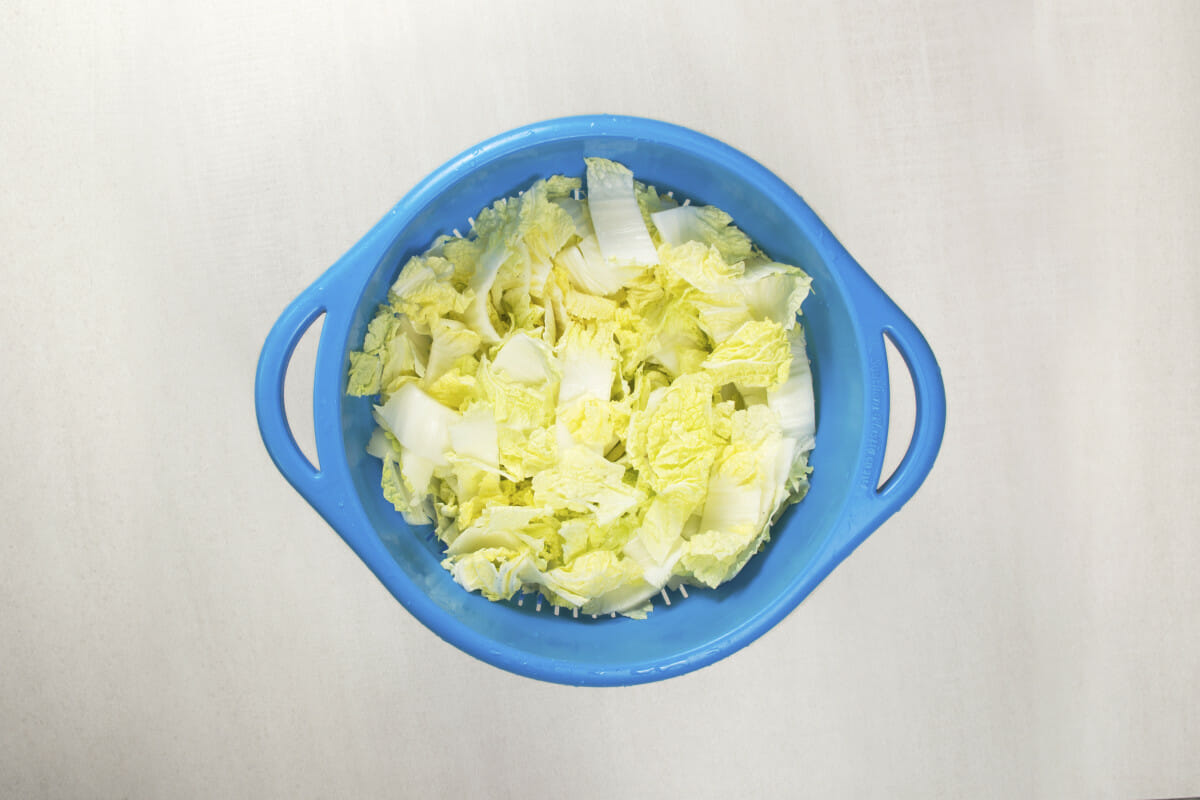
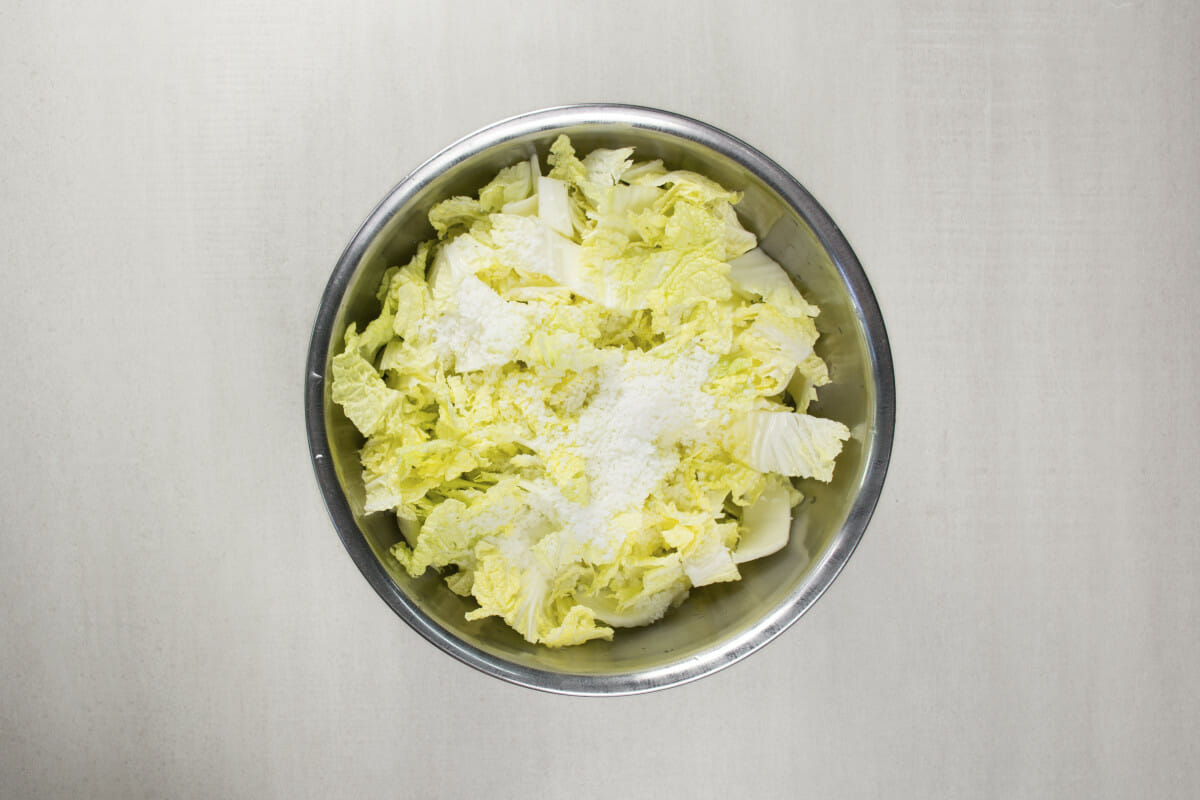
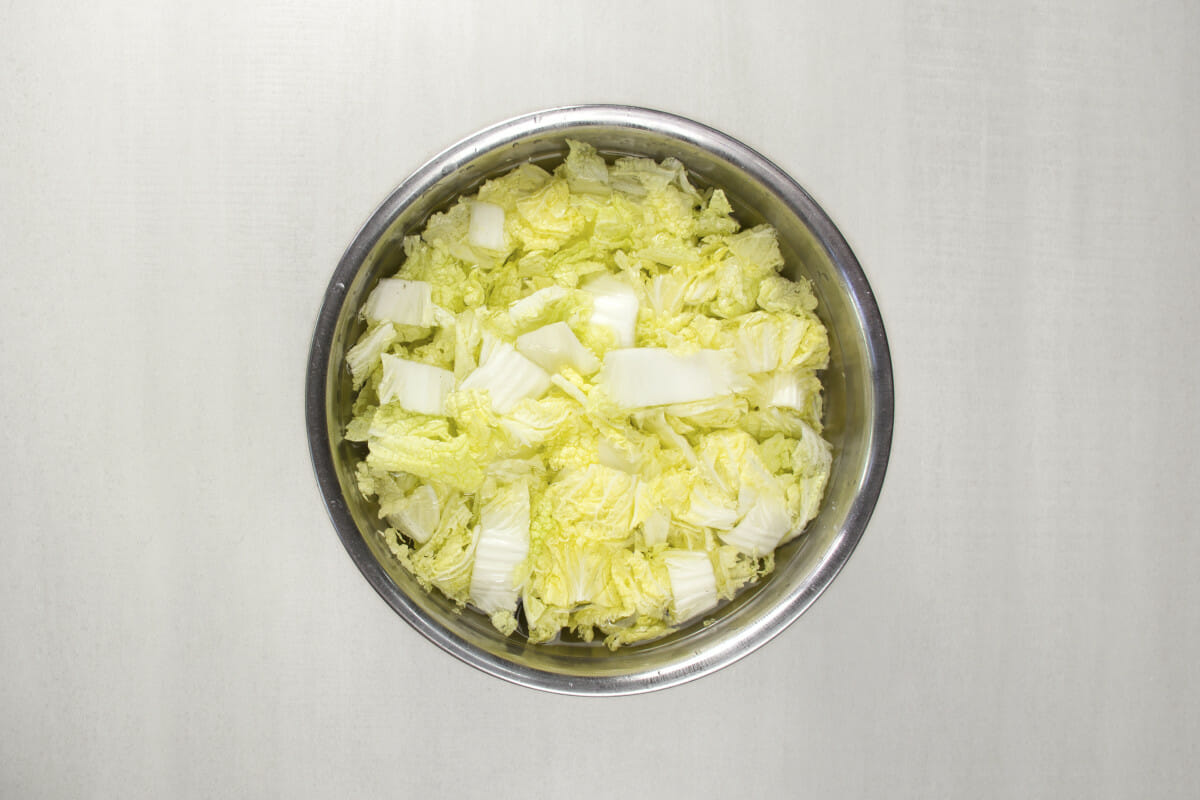
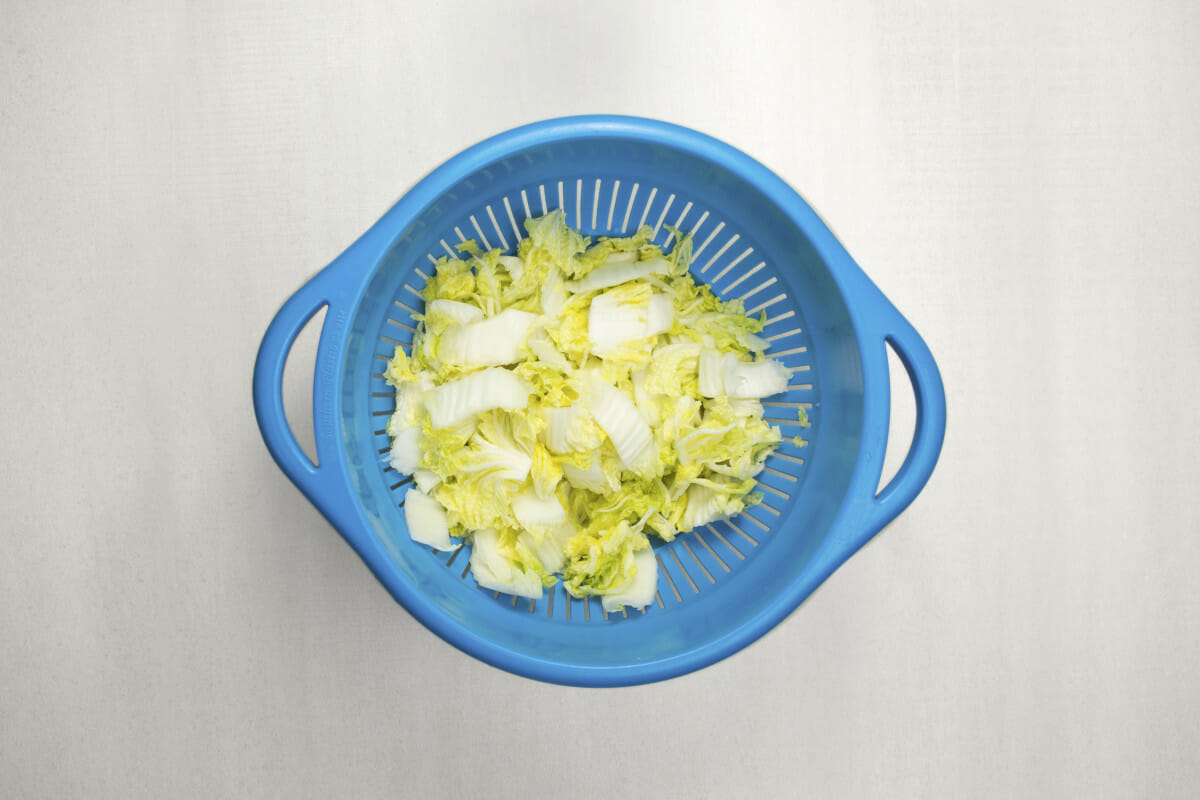
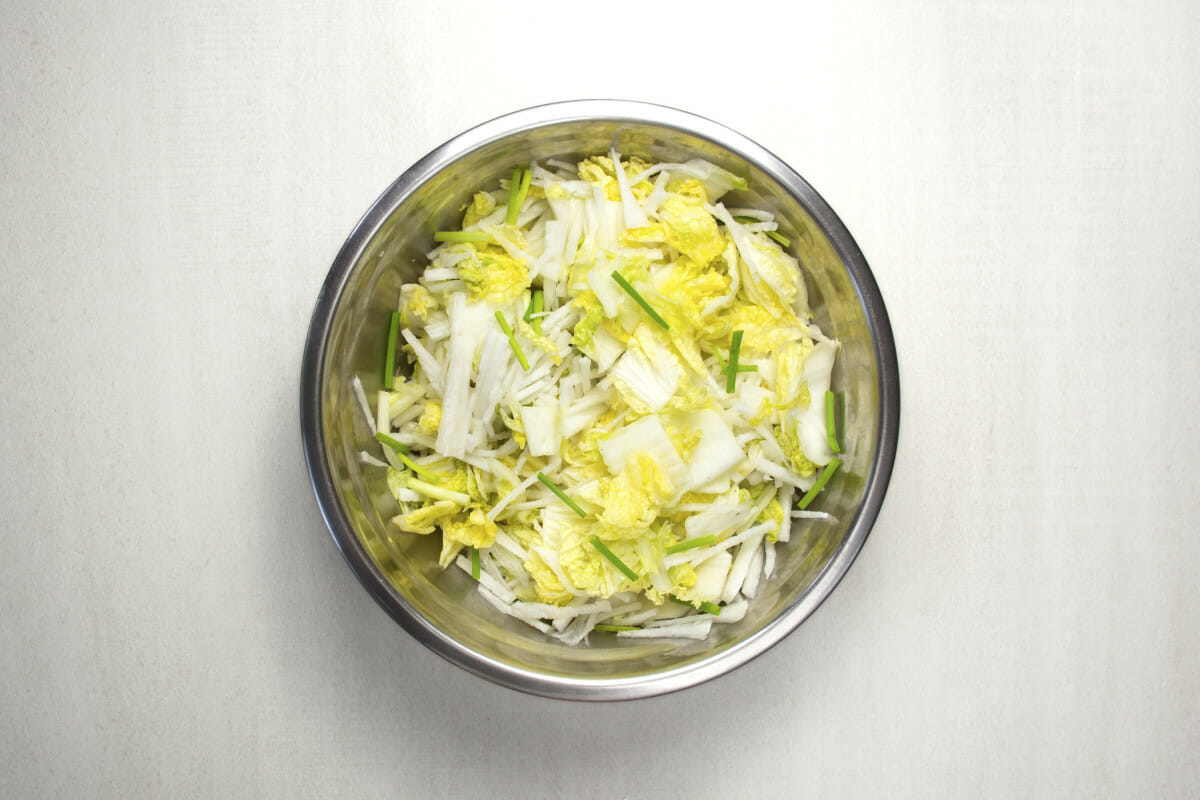
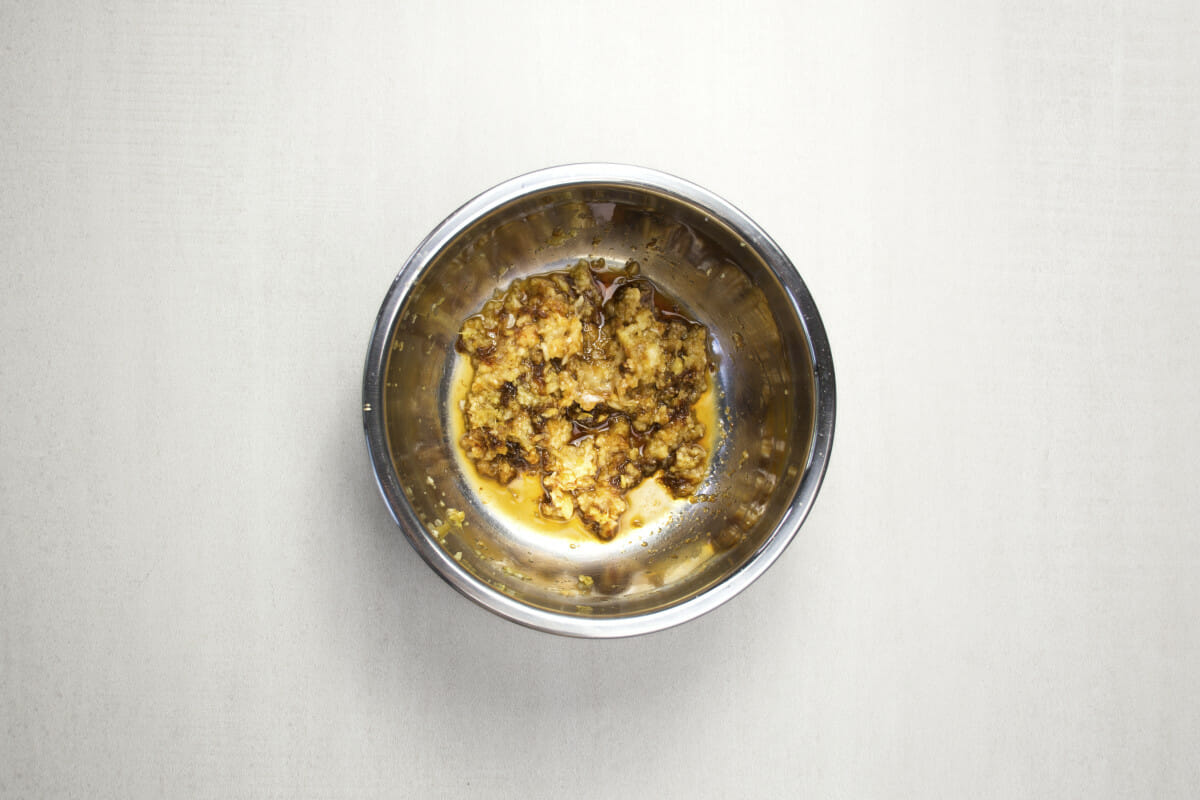
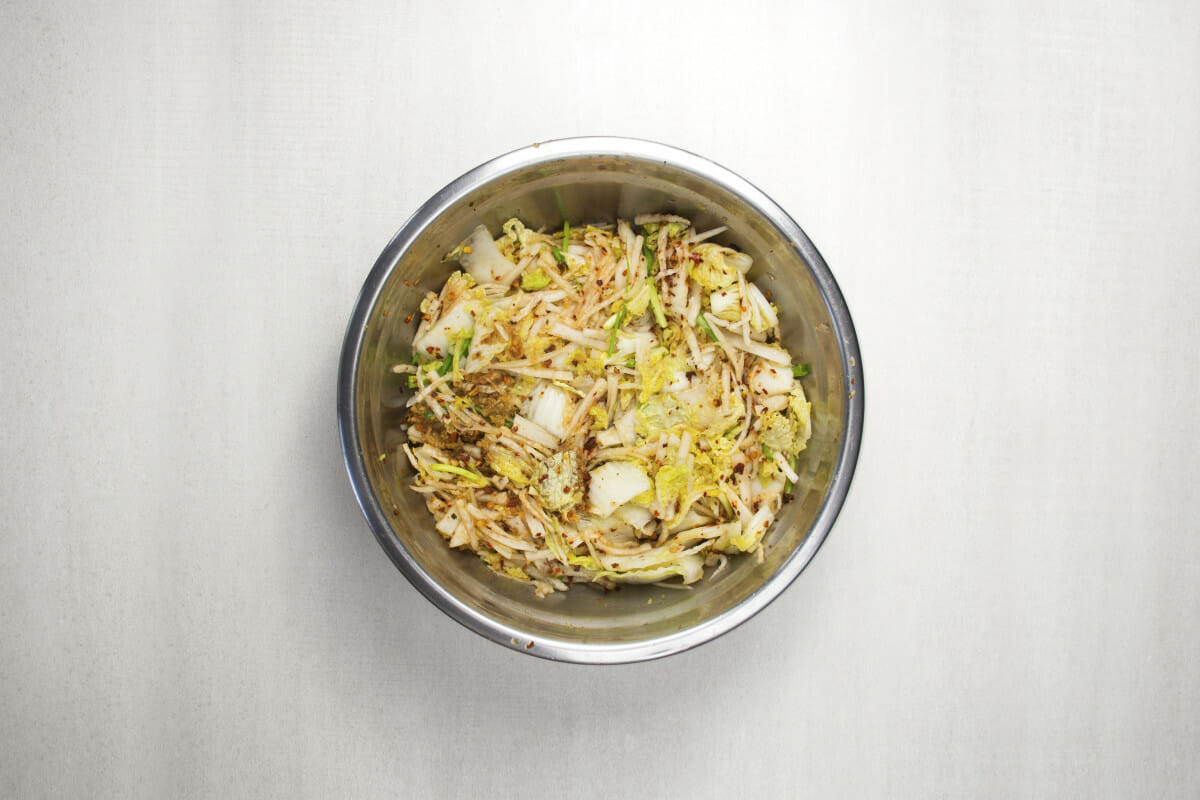
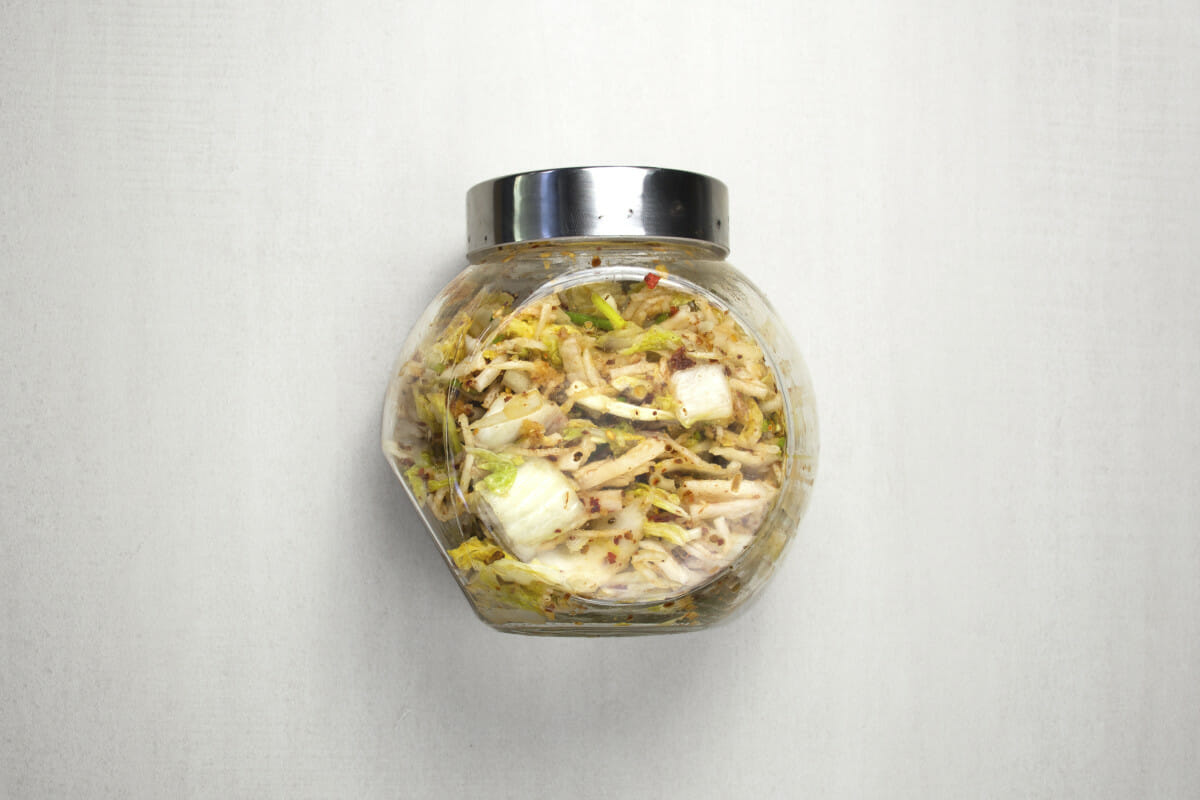
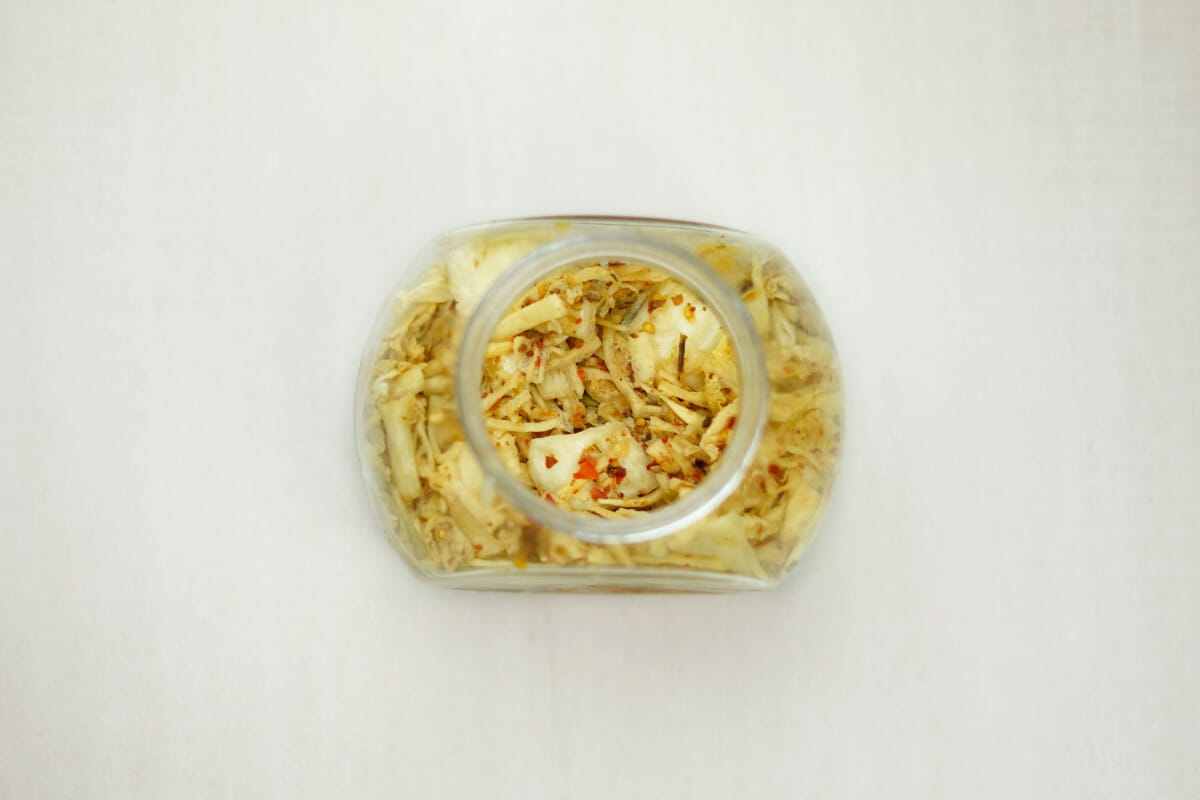
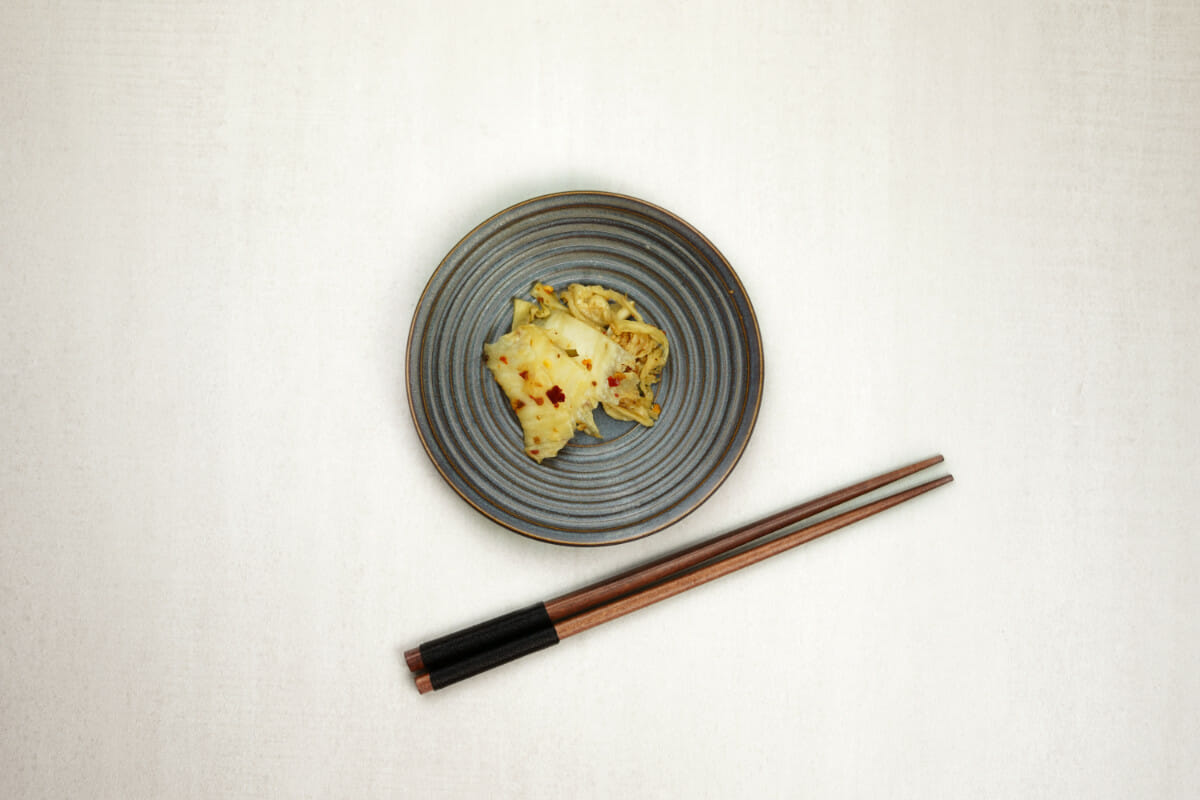
Alternatives and Substitutions
What can I use as an alternative for Nappa Cabbage?
Nappa cabbage is Chinese cabbage, but you can also use green cabbage, typical used to make coleslaw. Kimchi can be made with a variety of vegetables, such as daikon radish, scallions, mustard greens, lettuce, spinach, and cucumber.
Can the sugar be removed or replaced?
Yes, you can replace brown sugar with any type of sweetener such as honey, stevia, coco aminos, rice syrup, or “Ssal-jocheong” a common sweetener in Korean desserts and dishes, or completely omit the sugar.
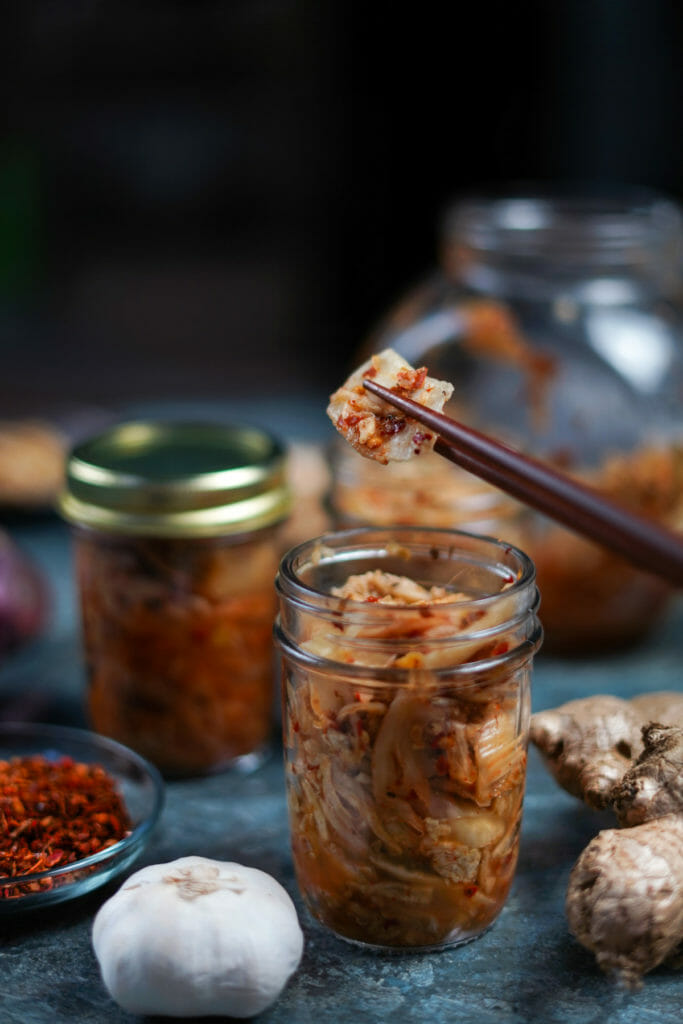
Frequently Asked Questions
What can you do with Kimchi?
Kimchi is not only a side dish, it can also turn into another ingredient to complete a dish such as kimchi pancakes or cheesy kimchi waffles, kimchi fried rice which is essentially garlic-fried rice or veggie rice sautéed with meats and kimchi, as a dumpling filling, dip, turn it into a stew also known as ‘Kimchi jjigae, or pasta sauce for a Korean-Italian fusion.
Are there any health benefits to eating Kimchi?
Kimchi is commonly seen as a great dish for gut health, fermented food similar to kimchi contains ‘lactobacilli’ or ‘healthy bacteria’ similar to yogurt that aids in digestion and prevents stomach cancer, it helps lower cholesterol levels, slow aging process as the fermented cabbage is rich in anti-oxidants, kimchi being nutrient-dense is also known to boost immunity. Kimchi is a safe dish unless the person has a specific allergy to the ingredients listed.
1. Fermented foods like kimchi help maintain intestinal flora balance by providing beneficial bacteria that can be consumed daily.
2. The fermentation process helps break down complex carbohydrates into simple sugars which makes it easier for us to digest them.
3. Eating fermented food regularly will improve digestion and boost immune function.
4. A diet rich in fiber-rich vegetables may reduce risk factors associated with colon cancer.
How long does Kimchi last?
Kimchi kept in a tightly sealed container or glass jar should be chilled in the fridge not frozen. But this can also last at least 1 week at room temperature and around 3 weeks to 2 months in the fridge. To tell if the kimchi has gone bad, check for molds, of white film on top, and while kimchi naturally smells sour and pungent, spoiled kimchi will smell very sour and a bit alcoholic.
What if the Kimchi lacks spiciness or is too spicy?
After the second or third day of fermentation, taste the kimchi and add more pepper flakes if you’d like it spicier, or add a tablespoon or 2 of brown sugar to lessen the spice. Mix this well and keep this refrigerated. But because the kimchi is still slowly fermenting in the fridge, the spice factor may also slowly get intense. If so, another way is adding the kimchi into other recipes suggested above like kimchi fried rice and pancakes to make it mild.
What main dishes can I serve Kimchi with?
Pretty much any kind of Filipino main dish will work well with kimchi. The key is to experiment. Try sweet pork adobo, chicken liver adobo, chicken salpicao, or picadillo. You can also try this side dish along with a pickled green papaya dish called Atchara.
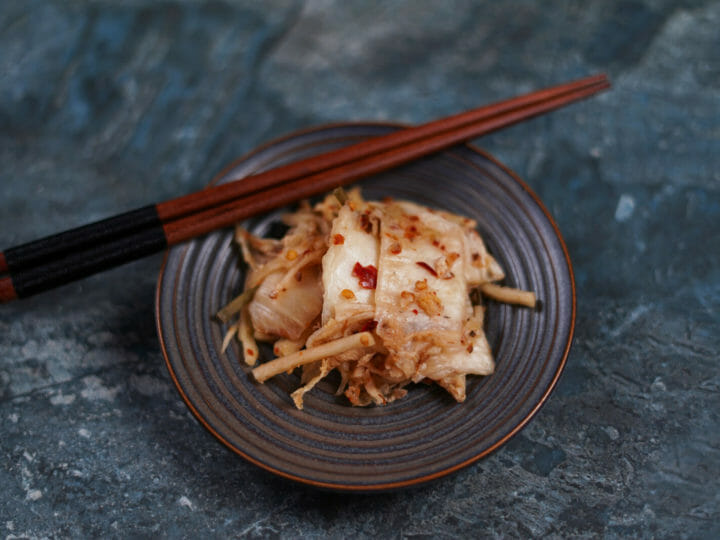
Kimchi
Make yourself a healthy fermented delicacy with a hint of Filipino flavor.
Ingredients
- 1 head Napa cabbage
- ¼ cup rock or sea salt
- water
- ½ cup radish (shredded)
- ½ cup scallions (cut to inches)
- 1 tablespoon garlic (minced)
- 1 teaspoon fresh ginger (minced)
- 1 teaspoon brown sugar
- 1 tablespoon fish sauce
- ½ tablespoon salted shrimp paste
- 3 - 5 tablespoons Korean red pepper flakes
Instructions
- Cut the Napa cabbage into 1-inch bite-sized pieces. Wash and strain.
- Place this in a large bowl with rock salt and mix well.
- Fill the bowl with enough water to cover the cabbage. Cover and place this in the fridge to chill overnight. The salt water helps soften the cabbage, and after a few hours, it will also add flavor and gives it its crunch.
- Strain the cabbage
- Mix the cabbage, shredded radish, and scallions. Set aside.
- For the sauce, mix together garlic, ginger, brown sugar, fish sauce, and shrimp paste.
- Add the sauce and red pepper flakes into the cabbage mix and toss well.
- Place these in a kimchi container, or any airtight container or glass jar. Keep this in a dry and dark place for 1 – 3 days or more.
- Usually, after three days, there will be a sour smell and bubbling liquids. Taste the kimchi after the second or third day to check if it suits your taste or if it needs more time. To decelerate fermentation, transfer the jar into the fridge once you've reached the flavor you prefer.
- Eat as a daily probiotic food, a side dish to grilled meats like bulogogi and galbi, beefy noodles like japchae, or make these into kimchi-based dishes.
